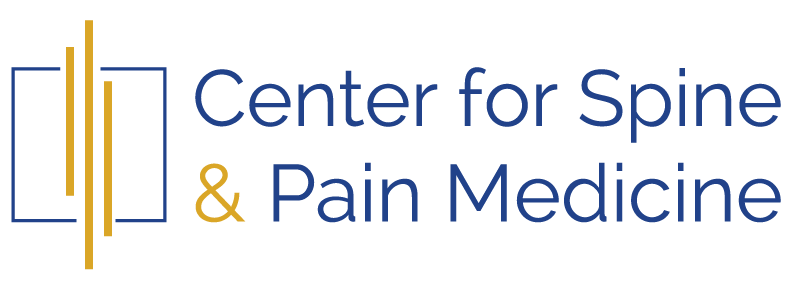
22 Dec What Triggers Neck Pain? 5 Reasons for Neck Pain
Injury or inflammation to muscles, joints, nerves, or other spine-related tissues can result in muscle tension in the neck. For instance, a “pinched” nerve or stretched ligament could be a probable cause for neck pain.
These neck discomfort causes are typically simple to cure. It’s still crucial to visit your doctor for a thorough assessment and avoid attempting to self-diagnose your neck problems.
The five most frequent causes of neck pain are discussed in this article, along with their treatments and typical symptoms to help you recognize them. It suggests a few lifestyle modifications that could ease the tension on your neck’s muscles.
Degenerative Disc Disease
Cervical spine discs experience “wear and tear” changes as you age, which are referred to as cervical degenerative disc disease.
Symptoms
In many situations, cervical degenerative disc degeneration goes undiagnosed. If symptoms do exist, they typically involve stiffness and neck pain that may get worse with activity.
Aging causes a progression of spinal degenerative changes, most notably a narrowing of the disc space and the development of bone spurs. This implies that spinal nerve roots may experience compression.
Numbness, tingling, and weakness in the arms and hands are some symptoms of this compression, also known as cervical radiculopathy. A person may experience additional issues as a result of cervical myelopathy if the spinal cord is squeezed as a result of degenerative processes. These issues consist of:
- Balance issues
- Bowel or bladder problems
- Difficulty walking
Diagnosis
Imaging tests may be used to confirm a diagnosis of cervical degenerative disc degeneration in addition to a medical history and a physical exam. These tests could consist of the following:
- Magnetic resonance imaging (MRI)
- X-ray
- Electromyography (EMG)
- Myelogram
Treatment
The severity of the symptoms and the presence of any neurologic symptoms affect how cervical degenerative disc disease is treated.
NSAIDs, ice, heat, and physical therapy are frequently suggested as early treatments. Injections of steroids may also provide momentary comfort.
Surgery to release the pressure is carried out in cases of degenerative disc disease that are severe and/or persistent, particularly when nerve roots or the spinal cord are affected.
Strain or Sprain
A neck sprain happens when the ligaments holding your vertebrae together are stretched too far or damaged. A neck strain is an injury to a tendon or a strained muscle in the neck. Both of these neck injuries have comparable symptoms and are typically treated in the same way.
A tendon is a band of tissue that joins muscle to bone, while ligaments are bands of tissue that connect one bone to another.
An abrupt neck movement, such as from a fall or a car accident, is typically to blame for a neck strain or sprain. However, these two types of neck problems can also be brought on by regular habits like bad posture or uncomfortable sleeping positions.
Symptoms
Among the signs of a neck sprain or strain are the following:
- A “crick in the neck” is a common description for neck tightness.
- Upper shoulder soreness and muscle spasms
- Neck ache when moving
- decreased neck elasticity
If your neck discomfort is severe, accompanied by a headache, or includes neurological symptoms like tingling, numbness, or weakness in the arms or hands, be sure to consult a doctor as soon as possible.
Diagnosis
A medical history and physical examination by themselves are typically enough to identify a neck strain or sprain. Really, the main purpose of imaging testing is to rule out other possible diagnosis.
Treatment
Ice and nonsteroidal anti-inflammatory drugs can typically reduce the discomfort and swelling of a neck strain or sprain (NSAID). Try the following additional home cures and lifestyle modifications:
- Exercising the head and neck to build strength.
- Lessening the number of pillows you use to support your neck when you sleep and moving around more frequently to lessen the effects of bad posture.
- Enhancing your posture while using a laptop or at a desk.
- Using massage to soothe a strained neck muscle.
- Adapting your sleep schedule will help you get enough rest.
- Keeping up with your eyesight maintenance if you wear glasses.
- In some circumstances, your doctor could advise short-term use of a soft collar and/or physical therapy.
How Long Does a Neck Strain Take to Heal?
The majority of neck sprains and strains will disappear within a few days or weeks. Special exercises might help to strengthen the spine after an accident or surgery. Normally, this conditioning lasts for four to six weeks, though this may change depending on your healthcare provider’s advice.
Osteoarthritis
When the protective cartilage lining each neck facet joint starts to deteriorate, cervical osteoarthritis, also known as cervical facet joint condition, develops. Although a typical part of aging, this condition can be hastened by a neck injury, being overweight, or being obese.
Frequently, cervical degenerative disc disease is accompanied by cervical osteoarthritis.
Symptoms
Neck stiffness and achy pain that is frequently confined to a single area are symptoms of cervical osteoarthritis. Less frequently, the discomfort could radiate to the back of the head or shoulder. With rest, cervical osteoarthritis-related neck pain typically gets better.
If the facet joint “wear and tear” alterations lead to spinal cord or nerve root compression, similar to cervical degenerative disc disease, symptoms of radiculopathy and myelopathy may appear.
Diagnosis
In addition to a medical history and physical examination, a computed tomography (CT) scan or MRI test can identify the typical symptoms of cervical osteoarthritis, including bone erosions, bone spur production, and narrowing of the facet joint space.
Remember that alterations to the facet joints detected by an imaging test do not necessarily always correspond to the presence or intensity of a person’s neck pain.
Treatment
The following therapies can be used to treat cervical osteoarthritis:
- Exercise in a reasonable manner
- Therapy with heat or ice
- Rest and modifying your activity
- Physical treatment Over-the-counter pain relievers like Tylenol (acetaminophen)
- Patients who experience considerable pain despite the aforementioned conservative treatments or who show signs of radiculopathy or myelopathy may have surgery as an alternative.
Whiplash
A fast movement that causes the head to be propelled first into hyperextension and then quickly forward into flexion can cause a whiplash injury, which is a neck injury. Though sports injuries or falls may less frequently be to blame, car accidents—often as a result of being rear-ended—are the most common cause.
Technically speaking, a whiplash injury is not a diagnosis but rather a series of events that can result in any variety of diagnoses, most frequently a neck strain or sprain. A whiplash injury can occasionally harm joints or discs, which can irritate spinal nerve roots or, in very rare cases, the spinal cord.
A cervical facet injection is occasionally carried out. In this operation, a steroid and/or numbing medication are injected into the facet joint. The diagnosis can then be made with any pain alleviation.
Symptoms
The following symptoms could exist depending on what the injury is and the precise nature of the injury:
- Headaches
- Neck stiffness accompanied by pain
- Back or shoulder ache
- Dizziness
- Radiating tingling and numbness in the fingers, hand, arm, and/or shoulder
- Fatigue
- Eyesight issues include hazy vision or light sensitivity
- Sleeping issues
Whiplash injuries can cause symptoms to appear immediately or within a few days after.
Diagnosis
A thorough approach, including a medical history, physical examination, and imaging tests, like neck X-rays or MRIs, are necessary for the diagnosis of whiplash damage.
The severity of whiplash injuries is determined by the signs and symptoms they produce.
Level 1: Brings on stiffness or soreness in the neck, but a physical examination reveals no abnormalities.
Level 2: Produces aberrant physical exam findings, such as neck discomfort or a decreased range of motion, along with neck pain or stiffness.
Level 3: Produces neck stiffness or soreness along with evidence of nerve injury, such as weakness or slowed reflexes.
Level 4: Brings on neck stiffness or pain along with a fractured or dislocated neck.
The most extreme strains, Level 4, definitely call for emergency medical intervention.
Treatment
The severity of the accident and any resulting neck damage determine the course of treatment for whiplash. Nevertheless, a mix of therapies is typically employed. The following are typical treatments for a moderate whiplash injury:
- Ice therapy followed a few days later by heat therapy
- Getting required amount of Rest
- Using painkillers available over-the-counter, such as Tylenol or Motrin (ibuprofen)
Your doctor can recommend painkillers like an opioid or a muscle relaxant for more serious or chronic cases. If a herniated disc is caused by the whiplash injury which has in turn caused nerve inflammation, your doctor may additionally advise physical therapy or an epidural injection.
A Herniated Disc
A herniated disc happens when the nucleus pulposus, a soft, rubbery substance ordinarily confined inside the disc, escapes and presses or pinches a nerve root.
An annular tear, also known as a herniation, affects the disc’s strong outer fibres and can cause a rip. The spinal joint may become stressed repeatedly or suddenly and violently, which can result in an annular tear.
Symptoms
The symptoms of nerve root compression (radiculopathy) are described as a burning or electric shock sensation that travels down one arm, combined with numbness and/or weakness, in people with herniated discs.
Diagnosis
An examination and medical history can frequently identify a herniated disc. Your doctor might advise an MRI test to confirm a diagnosis.
Treatment
Treatment for a herniated disc typically entails:
- Taking an NSAID or other anti-inflammatory drug
- Accelerating some physical activity, such as lifting
- Physical exercise
- Applying ice to the neck for 15 to 20 minutes many times each day
- Neck traction
- A Cervical diskectomy surgery, which is done to remove a herniated disc, is performed less frequently and based on the severity of the issue.
Remember, your neck is a flexible, injury-prone structure that is also sensitive to aging’s inevitable consequences. For neck pain, consult a medical professional. Hopefully, once you’ve been diagnosed, you can move on with a treatment strategy that restores your comfort and quality of life. Get in touch with us for more information or setting up a consultation.


